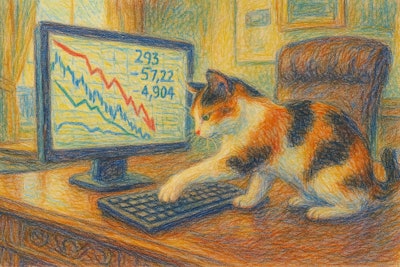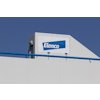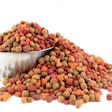
U.S. pet food prices and manufacturing costs have moved in tandem over the past seven years, but the data show that inflationary pressure has shifted, according to an AI-powered analysis of Federal Reserve Bank of St. Louis data.
 Tim Wall | DALL-E
Tim Wall | DALL-E
The chart above tracks two key indicators: the Consumer Price Index (CPI) for pet food and treats, and the Producer Price Index (PPI) for dog food manufacturing. Both measure different points in the value chain, and the gap between them helps illustrate margin dynamics, cost recovery and pricing strategies across the industry.
From late 2018 to late 2025, retail-level pet food prices, as measured by the CPI, rose about 27%. During the same period, manufacturing-level prices climbed roughly 34%. That steeper increase at the producer level reflects higher costs for labor, energy, packaging and key ingredients such as animal proteins and grains. Much of the sharp escalation occurred between 2020 and 2022, when supply chain disruptions pushed ingredient costs to historic highs. The CPI followed, though with a slight lag, as brands and retailers gradually passed through cost increases to the market.
Economic pattern shift in pet food
By 2023 and 2024, the pattern shifted. Manufacturing prices continued rising, but retail prices began to soften slightly, even dipping in 2024 before edging back up in 2025. That temporary decoupling suggests manufacturers stabilized production costs, while retailers adjusted promotional activity or pricing strategies to maintain volume in a more price-sensitive environment. For brands, the compression between PPI and CPI growth rates signaled a period of tighter margins.
In 2025, elevated manufacturing costs appear to have become the new baseline rather than a temporary spike. For the broader marketplace, the modest rise in retail prices since 2023 may contribute to more cautious purchasing patterns and closer scrutiny of value propositions. Companies operating in premium, grain-free or protein-rich segments may feel this most acutely, given their higher exposure to volatile input costs.
Overall, the indices suggest the industry has exited the extreme volatility of the pandemic era but entered a phase where cost pressures remain a challenge.
 Tim Wall | Sora
Tim Wall | Sora


















